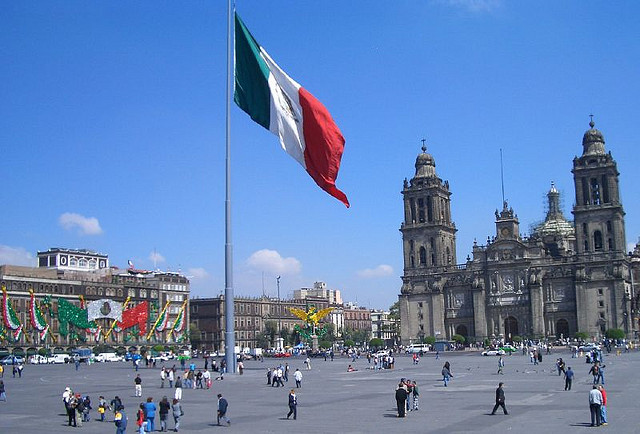It’s one of the most overused clichés in the financial blogosphere, but it basically boils down to the following equation:
Emerging Markets = BRICs (Brazil, Russia, India, China)
Today, however, a report from Turner Investments discusses how growth in this former “fab four” has slowed in the past 24 months, and at least to EM bulls, the new club is Turkey, Indonesia, Mexico, and the Philippines.
Not quite as catchy, the TIMPs are the subject of a new paper by Turner titled “Look out, BRICs, here come the TIMPs.” It can be seen in its entirety here, but we’ll provide you with the highlights.
On the subject of Brazil’s issues, Turner’s chairman and chief investment officer Bob Turner had this to say:
Part of the answer is Brazil’s imbalanced economy. Brazil’s growth depends heavily – too heavily, its critics say – on commodities, which represent two-thirds of Brazil’s total exports. A lackluster global economy lowered foreign demand for commodities and left the Brazilian economy exposed as too dependent on exports.
Also impairing Brazil’s growth has been the heavy hand of government. Brazil’s byzantine tax code and extensive regulations inhibit foreign trade and investment; indeed, Brazil ranks last for ease of doing business in Latin America, the World Bank reports.
Russia, according to Turner, is “looking a bit fragile”:
The problem mainly is the energy industry’s domination of the Russian economy; 35% of the Russian government’s budget is funded by oil and natural gas. And because that budget is growing, revenue from oil and gas need to keep pace.
[…]
Russia’s economic prospects darken further when you examine Russia’s demographics […] based partly on Russia’s abysmal mortality rate. Russian men between the ages of 25 and 54 are nearly twice as likely to die today as their fathers’ generation is. This is due to a high incidence of alcoholism and suicide among men 25 to 54 years old.
India is facing a plethora of problems:
Growth slowed from 9.7% in 2010 to 5% last year, and industrial output fell from 9.7% to 0.7%. Output growth in India’s manufacturing industry plummeted from 10.5% in 2010 to 0.6% last year.
[…]
For starters, India’s infrastructure is notoriously deficient, with woefully overcrowded trains, permanently snarled traffic, and city dwellers who steal electricity from neighbors with strategically placed extension cords.
What’s more, there’s a troubling gender imbalance in India. Millions of female babies have been aborted for decades because of the social stigma attached to women. Between 1961 and 2011, the number of girls per 1,000 boys dropped from 976 to 914.
Despite this, Turner still thinks that “as the twin bottlenecks of infrastructure problems and social inequality are gradually unclogged, India will be a stronger economic performer.”
Regarding China, Turner is concerned about a “shortage of qualified workers [that] has led to wage inflation, which has hampered China’s ability to remain a low-cost producer of goods,” but he’s still optimistic on the country’s future, saying “the Chinese economy can grow in the high single digits annually for many years to come.”
Thus, the creation of the TIMP acronym is more about which countries can “join their [the BRICs’] ranks,” not about which countries can replace them. But with that being said, continue reading on the next page to see what Turner had to say about this new group.
Turkey:
 Photo Credit: eva.jane
Photo Credit: eva.jane
Location, location, location – in many ways, Turkey represents the best of all worlds geographically. Turkey’s locus between eastern Europe to the west, Russia to the north, and the Middle East to the east has made the nation a lively hub for international trade over the centuries. Today Turkey’s proximity to those regions continues to make the nation an appealing place to conduct commerce and invest.
Indonesia:
 Photo Credit: Judhi Prasetyo
Photo Credit: Judhi Prasetyo
The world’s fourth-largest nation by population, Indonesia is truly a sleeping giant . . . and stirring. Indonesian economic growth surpassed that of every Asian country except China in 2012. We think that strong relative performance should persist, as President Susilo Bambang Yudhoyono increases infrastructure spending to more than $21 billion in the hopes of meeting his GDP-growth goal: an average of 6.6% by 2014.
Mexico:
 Photo Credit: schlaeger
Photo Credit: schlaeger
At last year’s Summer Olympics, Mexico defeated Brazil in men’s soccer, 2-1. This defeat has a parallel on the economic field, as Mexico has surpassed Brazil in GDP growth, with gains of 3.9% in the past two years, versus Brazil’s 2.7% in 2011 and 0.9% last year. Mexico’s growth is expected to accelerate, prompting Goldman Sachs to predict that the nation will become the world’s fifth-largest economy by 2050.
The Philippines:
 Photo Credit: Cealwyn
Photo Credit: Cealwyn
Until recently there was a dearth of foreign direct investment in the Philippines, averaging just $1.5 billion annually. But we think this scenic island nation finally is ready to meet the mostly unfulfilled expectations many have held for it since the Ferdinand and Imelda Marcos era of the 1980s. The Philippines is benefiting from low inflation (about 3%) and high GDP growth (about 6%). We think that pattern should remain in place for the next three years.
Remember, the entire paper can be seen here, and we’d encourage giving it a look. It’s a good read, and could give you a leg up on your emerging market-focused peers.



